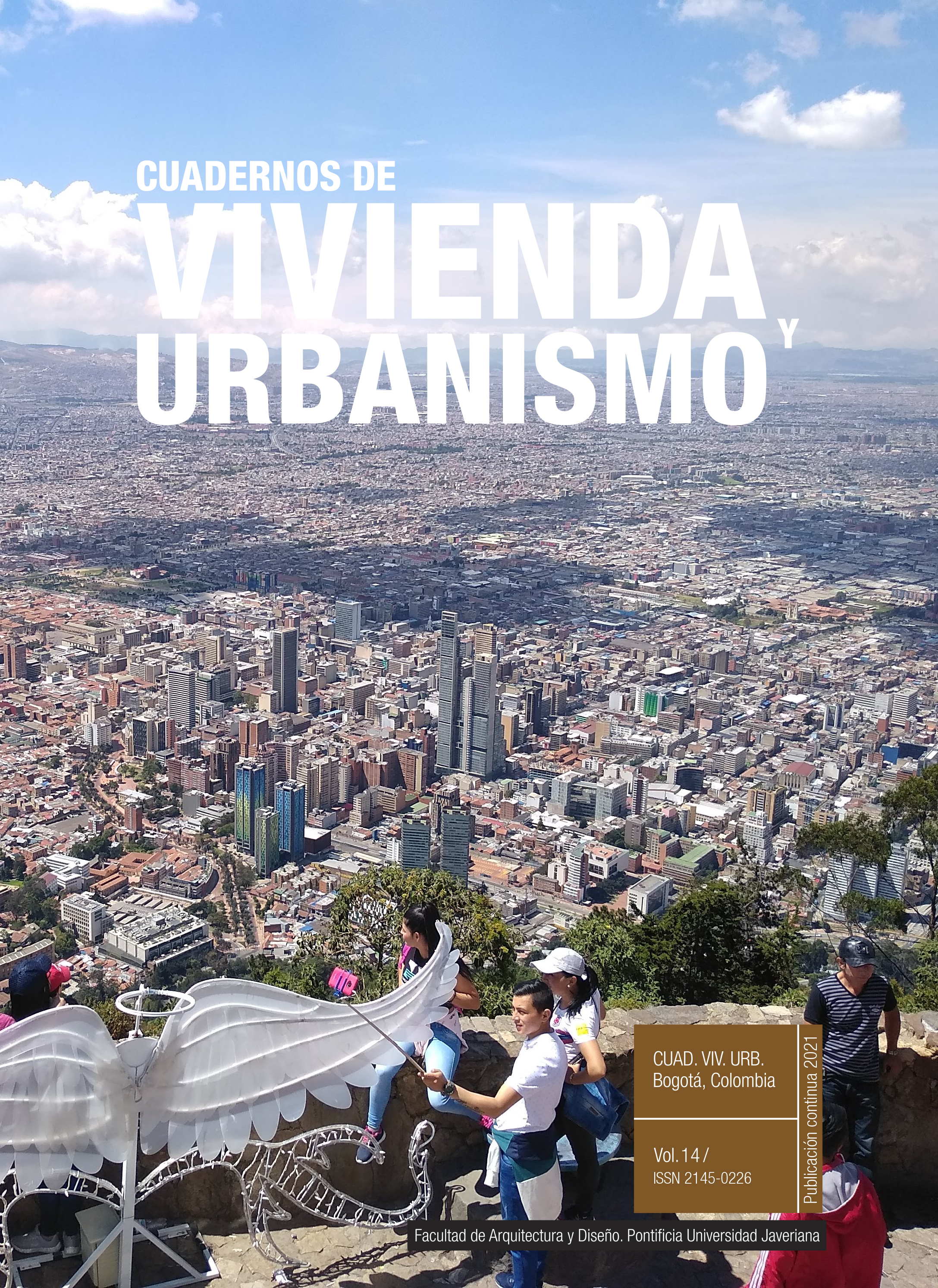Abstract
Local endowment of priority housing developments in the peripheral areas is a crucial element to market the houses. In addition, it improves the dweller’s standard of living. Therefore, some actors are seeking to control this endowment through different strategies of power. With a qualitative approach, this work analyzes the strategies in three neighborhoods in Ciudad Satélite, a residential development located in a peripheral area of San Luis Potosí, Mexico.
These cases evince how the public sector uses a flamboyant discursive power while the private sector uses the power to control the dwellers without being coercive. On the other hand, the dwellers question these forms of power through some practices whereby they appropriate and produce spaces in order to adapt them to their needs. The findings will serve to support the design of public policies as long as they bridge the gap between daily needs and the planning and production of priority housing.
Alva, B., López, M., y Durán, G., (2016). Diseño Urbano y Fragmentación Metropolitana en San Luis Potosí en Medio Ambiente Urbano, Sustentabilidad y Territorio. Volumen II. Sistemas Metropolitanos en Crisis. Universidad Autónoma de San Luis Potosí.
Boils, G. (2004). El Banco Mundial y la Política de Vivienda en México. Revista Mexicana de Sociología, 2, 345-367. http://doi.org/10.22201/iis.01882503p.2004.002.5989
Cheshire, L. A., Rosenblatt, T., Lawrence, G., y Walters, P. (2009). The governamentality of master planning: housing consumption, aesthetics and community on a new estate. Housing Studies, 24(5), 653-667. https://doi.org/10.1080/02673030903082302
Chipkin, I. (2003). Functional and Dysfunctional Communities: The Making of National Citizens. Journal of Southern African Studies, 29(1), 63-82. https://doi.org/10.1080/0305707032000060520
Dean, M. (1999). Governmentality: Power and Rule in Modern Society. Sage.
De Certeau, M. (2000). La invención de lo cotidiano. Vol. 1. Artes de hacer. Universidad Iberoamericana.
Dodson, J. (2006). The “roll” of the state: government, neoliberalism and housing assistance in four advanced economies. Housing, Theory and Society, 23(4), 224-243. https://doi.org/10.1080/14036090601043540
Flint, J. (2004). The responsible tenant: housing governance and the politics of behaviour. Housing Studies, 19(6), 893-909. https://doi.org/10.1080/0267303042000293991
Flint, J., y Rowlands, R. (2003). Commodification, normalization and intervention: Cultural, social and symbolic capital in housing consumption and governance. Journal of Housing and the Built Environment, 18(3), 213-232. https://doi.org/10.1023/A:1025113329508
Foucault, M., Álvarez-Uría, F., y Varela, J. (1992). Microfísica del poder. La Piqueta.
Foucault, M. (2002). Vigilar y castigar. Siglo XXI Editores.
Foucault, M. (2006). Seguridad, territorio, población (H. Pons, Trad.). Fondo de Cultura Económica.
Gurney, C. (1999). Pride and prejudice: discourses of normalization in public and private accounts of home ownership. Housing studies, 14(2), 163-183. https://doi.org/10.1080/02673039982902
Huxley, M. (2007). Geographies of Governmentality. En J. Crampton y E. Stuart (Eds.), Space, Knowledge and Power, Foucault and Geography (pp. 185-204). Ashgate.
Huxley, M. (2008). Space and government: Governmentality and geography. Geography Compass, 2(5), 1635-1658. https://doi.org/10.1111/j.1749-8198.2008.00133.x
Infonavit. (2010). Plan Financiero 2011-2015: Innovar para consolidar. http://boletin.dseinfonavit.org.mx/051/doctos/PF_2011_2015.pdf
Krefting, L. (1991). Rigor in Qualitative Research: the Assessment of Trustworthiness. American Journal of Occupational Therapy, 45(3), 214-222. https://doi.org/10.5014/ajot.45.3.214
Lemke, T. (2000, 21 de septiembre). Foucault, Governmentality and Critique [Ponencia]. Conferencia Rethinking Marxism, Universidad de Amherst, Massachusetts, Estados Unidos. http://www.thomaslemkeweb.de/publikationen/Foucault,%20Governmentality,%20and%20Critique%20IV-2.pdf
McGuirk, P., y Dowling, R. (2011). Governing Social Reproduction in Masterplanned Estates: Urban Politics and Everyday Life in Sydney. Urban Studies, 48(12), 2611-2628. https://doi.org/10.1177/0042098011411950
McKee, K. (2009). Regulating Scotland's social landlords: localised resistance to technologies of performance management. Housing Studies, 24(2), 155-171. https://doi.org/10.1080/02673030802704345
McKee, K., y Cooper, V. (2008). The paradox of tenant empowerment: regulatory and liberatory possibilities. Housing, theory and society, 25(2), 132-146. https://doi.org/10.1080/14036090701657363
Miller, P., y Rose, N. (2008). Governing the present: Administering economic, social and personal life. Polity.
Nethercote, M. (2015). Operationalizing a Responsibility Agenda in Australia’s Indigenous Communities: Confused, Doubtful and Subversive Public Housing Tenants. Housing, Theory and Society, 32(2), 171-195. https://doi.org/10.1080/14036096.2014.994073
Perera, N. (2009). People's spaces: Familiarization, subject formation and emergent spaces in Colombo. Planning Theory, 8(1), 51-75. https://doi.org/10.1177/1473095208099298
Power, E. R. (2014). Placing community self-governance: Building materialities, nuisance noise and neighbouring in self-governing communities. Urban Studies, 52(2), 245-260. https://doi.org/10.1177/0042098014525242
Puebla, C. (2002), Del Intervencionismo Estatal a las Estrategias Facilitadoras: Cambios en la Política de Vivienda en México (1972-1994). El Colegio de México.
Rose, N., O’ Malley, P., y Valverde, M. (2006). Governmentality. Annual Review of Law and Social Science, 2, 83-104. https://doi.org/10.1146/annurev.lawsocsci.2.081805.105900
Secretaría General de Gobierno de San Luis Potosí. (2007, 15 de junio). Plan Parcial de Desarrollo Urbano, de la Sección Sur Oriente de la Intersección Formada por la Carretera a Río Verde y el Libramiento de Cuota a Monterrey. Periódico Oficial, 072, 2a secc, anexo.
Thompson, K. (2003). Forms of resistance: Foucault on tactical reversal and self-formation. Continental Philosophy Review, 36(2), 113-138. https://doi.org/10.1023/A:1026072000125
Urbi. (s. f.). Urbi: Mi comunidad. http://www.urbi.com/
Villavicencio, J. (2000). Condiciones de vida y vivienda de interés social en la ciudad de México. Miguel Ángel Porrúa

This work is licensed under a Creative Commons Attribution 4.0 International License.


